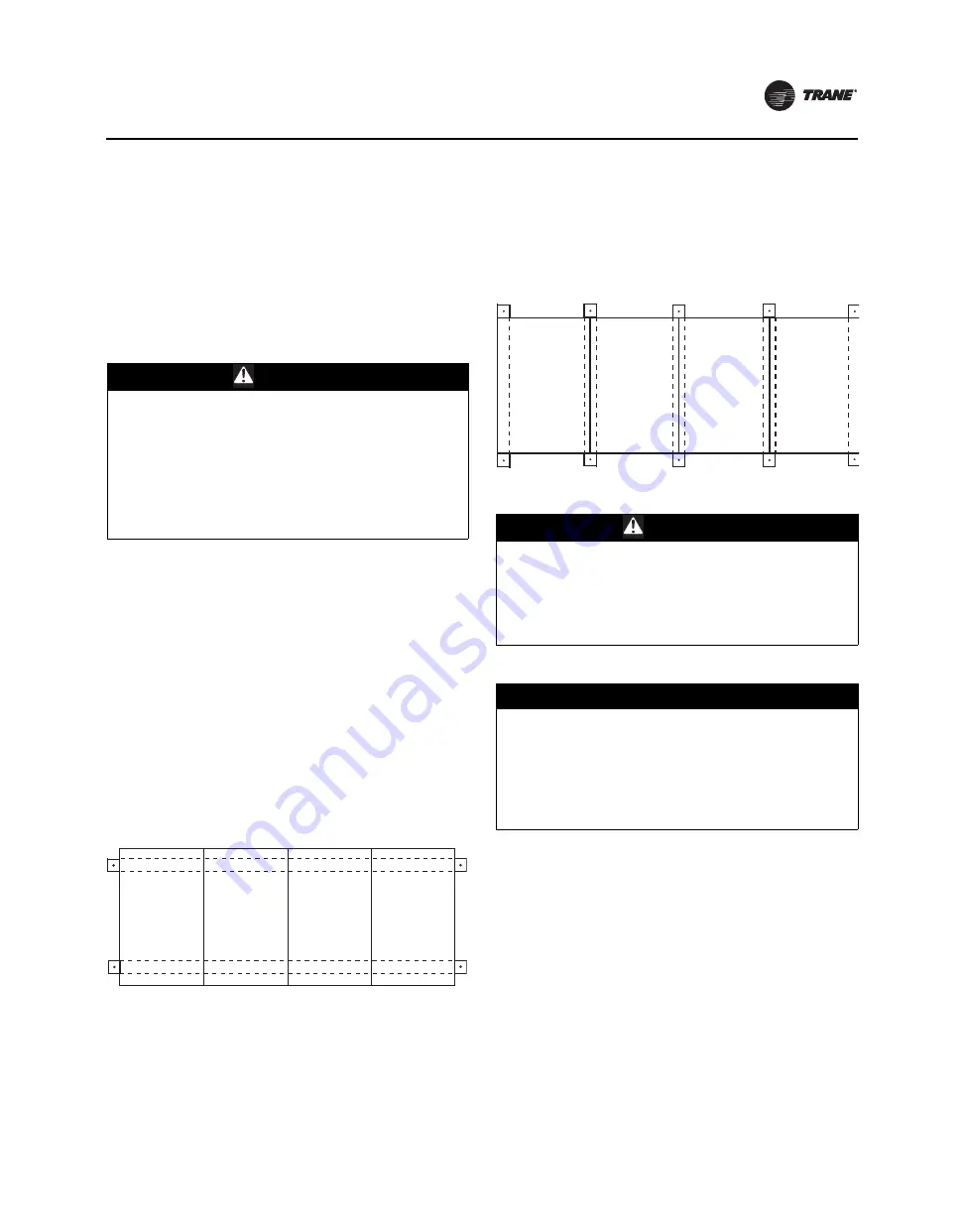
Installation - Mechanical
CLCH-SVX010A-EN
15
Unit Assembly
Note:
Air handlers often include optional factory-
provided casing penetration entry points for field-
provided wiring. Consider overall unit
serviceability and accessibility before mounting,
running wires (power), making cabinet
penetrations, or mounting any components to the
cabinet.
Ceiling Suspension
Using a Field-Provided Mounting Frame
If a field-provided mounting frame is used for ceiling
suspension, the installer/contractor must provide a
ceiling-suspended mounting frame designed to support
the length, width, and weight of the entire air-handling
unit. See submittal for weights.
Note:
It is the building engineer’s responsibility to size the
structural channels and to provide the appropriate
hangers.
Structural channels in a field-provided frame can be
mounted parallel to airflow or perpendicular to airflow:
•
For parallel-to-airflow channels, size channels based
on a four-point load distribution (see
Figure 8
.
•
For perpendicular-to-airflow channels, size channels
based on the load distribution of the individual
sections and install the channels so that both ends of
every section are supported (see
Figure 9
).
WARNING
Risk of Unit Dropping!
Do not use mounting legs for ceiling suspension,
external isolation, or unit support during module
placement. Mounting legs are designed only to secure
the unit to the floor, housekeeping pad, or platform.
Improper use of the mounting legs as described above
could result in unit dropping and crushing technicians
which could result in death or serious injury, and
equipment damage.
Figure 8.
Typical suspension method-parallel channels
Figure 9.
Typical ceiling suspension-perpendicular
channels
WARNING
Toxic Fumes!
Keep open flame away from unit exterior or interior. Do
not weld or use cutting torch on the exterior or interior
of the unit. The unit contains polyurethane insulation.
Flame could produce toxic gas which could result in
death or serious injury.
NOTICE:
Equipment Damage!
The internal sections of this unit containing electrical
components must not exceed 104
o
F operating
temperature. Internal sections of the unit which do not
contain electrical components must not exceed 200
o
F
temperature. Failure to comply with temperature
requirements could result in equipment damage.







































